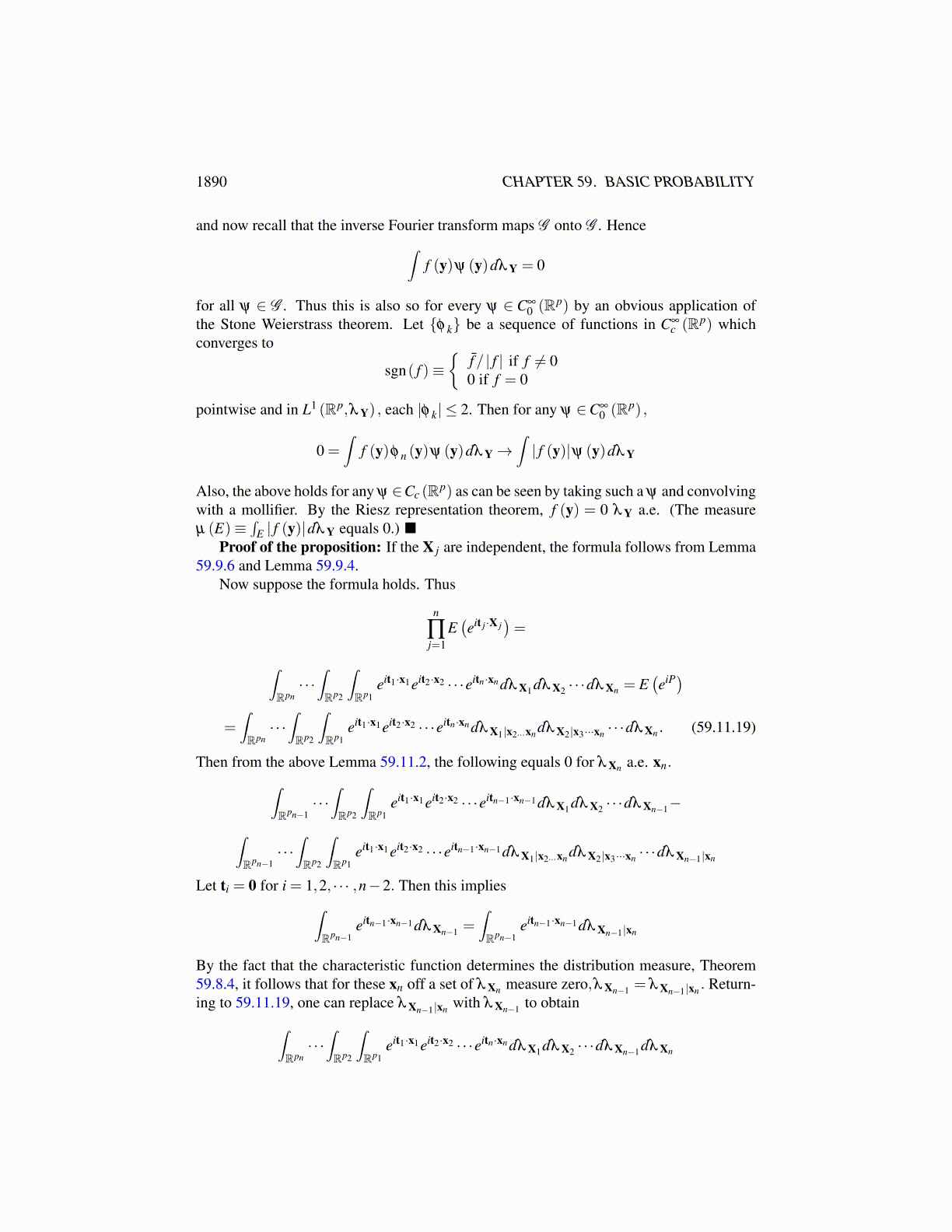
1890 CHAPTER 59. BASIC PROBABILITY
≥k+r
∑i=k+1
∫Ri−1
(1−ψ i
({x j}i−1
j=1
))[φ (xi−1)−φ (xi−1)]dλ (X1,···,Xi−1) = 0
because of the assumption that our sequence of random variables is a submartingale andthe observation that φ is both convex and increasing.
Now let the unbroken strings of ones for {Yi (ω)} be
{k1, · · ·,k1 + r1} ,{k2, · · ·,k2 + r2} , · · ·,{km, · · ·,km + rm} (59.10.17)
where m = V (ω) ≡ the number of unbroken strings of ones in the sequence {Yi (ω)}. ByCorollary 59.10.6 V (ω)≥U[a,b] (ω).
φ (Xn (ω))−φ (X1 (ω))
=n
∑k=1
(φ (Xk (ω))−φ (Xk−1 (ω)))Yk (ω)
+n
∑k=1
(φ (Xk (ω))−φ (Xk−1 (ω)))(1−Yk (ω)).
Summing the first sum over the unbroken strings of ones (the terms in which Yi (ω) = 0contribute nothing), implies
φ (Xn (ω))−φ (X1 (ω))
≥U[a,b] (ω)(b−a)+0+n
∑k=1
(φ (Xk (ω))−φ (Xk−1 (ω)))(1−Yk (ω)) (59.10.18)
where the zero on the right side results from a string of ones which does not produce anupcrossing. It is here that we use φ (x) ≥ a. Such a string begins with φ (Xk (ω)) = a andresults in an expression of the form φ (Xk+m (ω))−φ (Xk (ω))≥ 0 since φ (Xk+m (ω))≥ a.If we had not replaced Xk with φ (Xk) , it would have been possible for φ (Xk+m (ω)) to beless than a and the zero in the above could have been a negative number.
Therefore from Formula 59.10.18,
(b−a)E(U[a,b]
)≤ E (φ (Xn)−φ (X1))≤ E (φ (Xn)−a)
= E((Xn−a)+
)≤ |a|+E (|Xn|)
and this proves the lemma.
Theorem 59.10.8 (submartingale convergence theorem) Let {Xi}∞
i=1 be a submartingalewith K ≡ sup{E (|Xn|) : n≥ 1} < ∞. Then there exists a random variable, X∞, such thatE (|X∞|)≤ K and limn→∞ Xn (ω) = X∞ (ω) a.e.
Proof: Let a,b ∈ Q and let a < b. Let Un[a,b] (ω) be the number of upcrossings of
{Xi (ω)}ni=1. Then let
U[a,b] (ω)≡ limn→∞
Un[a,b] (ω) = number of upcrossings of {Xi} .